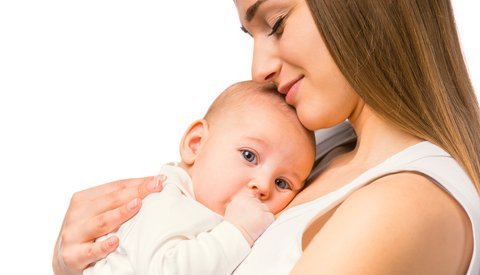The ability to manage stress and control impulses is a crucial task children learn throughout development. Self-regulation problems are common when young children experience significant fear, loss, and disrupted attachment. There is evidence that chronic stress experienced prenatally influences the biological development of stress reactivity and self-regulation in infants and children . From birth to 3 years, children rely heavily on parents and caregivers to help them learn to control their emotions, impulses, and behavior. Self-control skills continue to develop throughout childhood and adolescence.
A classic study in the 1960s, called the “marshmallow test,” demonstrated the importance of impulse control. Four-year-olds were told they could eat one marshmallow now, or wait until the adult returned and then have two marshmallows. More than a decade later, the children who waited were healthier emotionally and behaviorally, and had much higher scores on their SATs. As adults, those who were able to delay gratification as children again scored higher on mental health and relationship measures (Mischel, Shoda, and Peake 1988).
Secure attachment with a primary caregiver is critical if children are to learn self-control. The sensitive, reliable and appropriately responsive caregiver provides a balance of stimulation (“up-regulation”) and soothing (“down-regulation”) to modulate the infant’s level of arousal. Over time, the baby internalizes his or her parents comfort and support, and learns to soothe and regulate him or herself. Neglectful and abusive caregivers, or separations
and other attachment disruptions, can result in chronic over- or underarousal in infants and toddlers. Researchers found that as many as 80 percent of maltreated children develop disorganized–disoriented attachment patterns, resulting in numerous symptoms, including an inability to modulate
emotions and impulses .
The infant is dependent on the attachment figure to help regulate physiology and behavior. For example, the infant’s temperature and needs for security and comfort are best regulated by being lovingly held in the arms of the caregiver. During the first year of life, caregivers assist babies by responding in a sensitive and attuned way to physical and emotional needs, and by reducing stress. Caregivers provide these “co-regulating” functions and over time children learn self-regulation.
Children who experience maltreatment and compromised attachment, however, often fail to develop self-regulation abilities, because their caregivers did not provide the necessary support and security. For example, maltreated
children often have dysregulation of the hypothalamic–pituitary–adrenal (HPA) hormonal systems, which affects emotional, behavioral, and cognitive responses, and can impair brain development.
Neglectful, abusive, and nonresponsive caregivers typicallyc create attachment disorders, which can result in out-of-control, angry, depressed, and hopeless children by 2 to 3 years of age. Children with attachment disorders have frequent temper tantrums, are impulsive, and desperately seek the attention not previously experienced. They are often restless, irritable, have a brief attention span, demand instant gratification, and have little frustration tolerance . By age 5, they often becomes angry, oppositional, and show lack of enthusiasm. Their inability to control impulses and emotions leads to aggressive acting out and lack of enduring and satisfying relationships with parents, peers and others.


